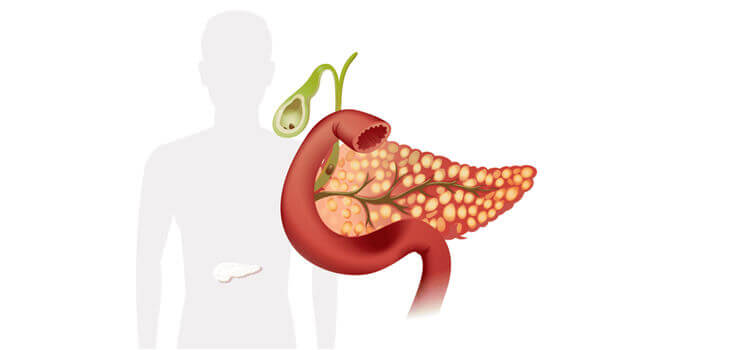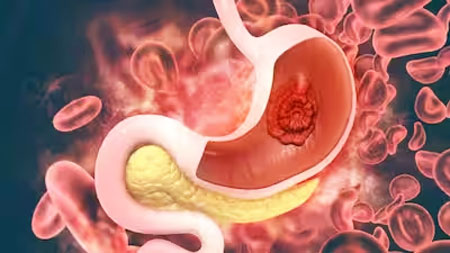Introduction
Liver cancer is a serious condition that often requires surgical intervention as part of its treatment. While surgery can be an effective approach to combating liver cancer, patients and their families must understand the potential side effects and the comprehensive treatment plans that typically accompany such procedures. We provide an in-depth look at what patients can expect when undergoing liver cancer surgery. The best oncologists in chennai play an important role in treatment.

Types of Liver Cancer Surgery
Before delving into side effects and treatment plans, it’s important to understand the main types of liver cancer surgery:
- Partial Hepatectomy: Removal of the part of the liver containing the tumour.
- Liver Transplantation: Replacement of the diseased liver with a healthy liver from a donor.
- Ablation: Destruction of the tumour using heat, cold, or alcohol injection.
- Embolization: Blocking blood flow to the tumour to “starve” it.
The choice of surgery depends on factors such as the size and location of the tumour, the overall health of the liver, and the patient’s general condition.
Side Effects of Liver Cancer Surgery
Liver cancer surgery, like any major operation, comes with potential side effects. These can vary depending on the type of surgery performed and the individual patient’s health status.
Short-term Side Effects
- Pain: Post-surgical pain is common and can be managed with medication.
- Infection: There’s a risk of infection at the incision site or internally.
- Bleeding: Internal or external bleeding may occur, potentially requiring additional procedures.
- Liver Failure: Temporary liver failure can occur, especially if a large portion of the liver is removed.
- Blood Clots: There’s an increased risk of blood clots forming in the legs (deep vein thrombosis) or lungs (pulmonary embolism).
- Bile Leakage: Rarely, bile may leak from the liver, requiring additional treatment.
- Pneumonia: Extended bed rest can increase the risk of developing pneumonia.
Long-term Side Effects
- Liver Dysfunction: If a significant portion of the liver is removed, the remaining liver may struggle to function properly.
- Recurrence: There’s always a risk that the cancer may return, necessitating ongoing monitoring.
- Chronic Pain: Some patients may experience long-term pain or discomfort in the surgical area.
- Nutritional Issues: The liver plays a crucial role in metabolism, and its reduced function may lead to nutritional deficiencies.
- Psychological Effects: Dealing with cancer and major surgery can lead to anxiety, depression, or other mental health challenges.
- Immunosuppression: For liver transplant patients, lifelong immunosuppressive drugs are necessary, increasing the risk of infections and other health issues.
Treatment Plans for Liver Cancer Surgery
A comprehensive treatment plan for liver cancer surgery typically involves several phases:
Pre-surgical Phase
- Diagnostic Tests: Comprehensive imaging (CT, MRI, PET scans) and blood tests to determine the extent of the cancer and overall liver function.
- Staging: Determining the stage of the cancer to inform treatment decisions.
- Pre-surgical Optimization: Improving the patient’s overall health through nutrition, exercise, and management of other medical conditions.
- Neoadjuvant Therapy: In some cases, chemotherapy or radiation may be used to shrink the tumour before surgery.
- Patient Education: Informing the patient about the procedure, potential risks, and post-surgical care.
Surgical Phase
- Anesthesia: Administration of general anesthesia.
- Surgery: Performing the chosen surgical procedure (partial hepatectomy, transplantation, etc.).
- Intraoperative Monitoring: Continuous monitoring of vital signs and liver function during the procedure.
Post-surgical Phase
- Intensive Care: Immediate post-operative care in an intensive care unit.
- Pain Management: Administration of pain medication and monitoring of comfort levels.
- Wound Care: Regular checking and cleaning of the surgical site to prevent infection.
- Liver Function Monitoring: Frequent blood tests to ensure proper liver function.
- Early Mobilization: Encouraging the patient to move and walk as soon as safely possible to prevent complications like blood clots and pneumonia.
- Nutritional Support: Ensuring proper nutrition, potentially including temporary tube feeding if necessary.
Recovery and Follow-up Phase
- Gradual Return to Activities: A structured plan to help the patient slowly return to normal activities.
- Rehabilitation: Physical therapy or occupational therapy as needed.
- Regular Check-ups: Frequent follow-up appointments to monitor recovery and check for any signs of recurrence.
- Imaging Studies: Regular CT or MRI scans to check for cancer recurrence.
- Blood Tests: Ongoing liver function tests and tumour marker tests.
- Adjuvant Therapy: Additional treatments like chemotherapy may be recommended to reduce the risk of recurrence.
- Psychosocial Support: Counseling or support groups to help with the emotional aspects of cancer treatment.
- Lifestyle Modifications: Guidance on maintaining a healthy diet, exercise regimen, and avoiding harmful substances like alcohol.
Managing Side Effects
Effective management of side effects is a crucial part of the treatment plan:
- Pain Management: A combination of medications and non-pharmacological approaches (like relaxation techniques) can help manage pain.
- Infection Prevention: Strict adherence to wound care instructions and prompt reporting of any signs of infection.
- Nutritional Support: Working with a dietitian to ensure proper nutrition, which is crucial for liver function and overall recovery.
- Exercise: Gradual introduction of exercise, as approved by the medical team, to improve overall health and reduce the risk of complications.
- Psychological Support: Access to mental health professionals to address any emotional or psychological challenges.
- Medication Management: Careful monitoring and adjustment of medications, particularly for transplant patients on immunosuppressants.
Long-term Surveillance
After the initial recovery period, long-term surveillance is essential:
- Regular Imaging: Typically, CT or MRI scans every 3-6 months for the first two years, then annually.
- Blood Tests: Regular liver function tests and checks for tumour markers.
- Lifestyle Management: Ongoing support for maintaining a healthy lifestyle to support liver health and overall well-being.
- Secondary Prevention: Monitoring for and managing any long-term effects of treatment.
Conclusion
Liver cancer surgery is a complex procedure that requires a comprehensive, multidisciplinary approach to care. While the side effects can be significant, advances in surgical techniques and post-operative care have greatly improved outcomes for many patients.
Understanding the potential side effects and the details of the treatment plan can help patients and their families prepare for the challenges ahead. Patients must maintain open communication with their healthcare team throughout the entire process, from pre-surgical preparation through long-term follow-up care.
With proper care and management, many patients can recover well from liver cancer surgery and go on to lead fulfilling lives. However, the journey requires patience, resilience, and a strong support system. As medical science continues to advance, we can hope for even better treatments and outcomes for liver cancer patients in the future.


